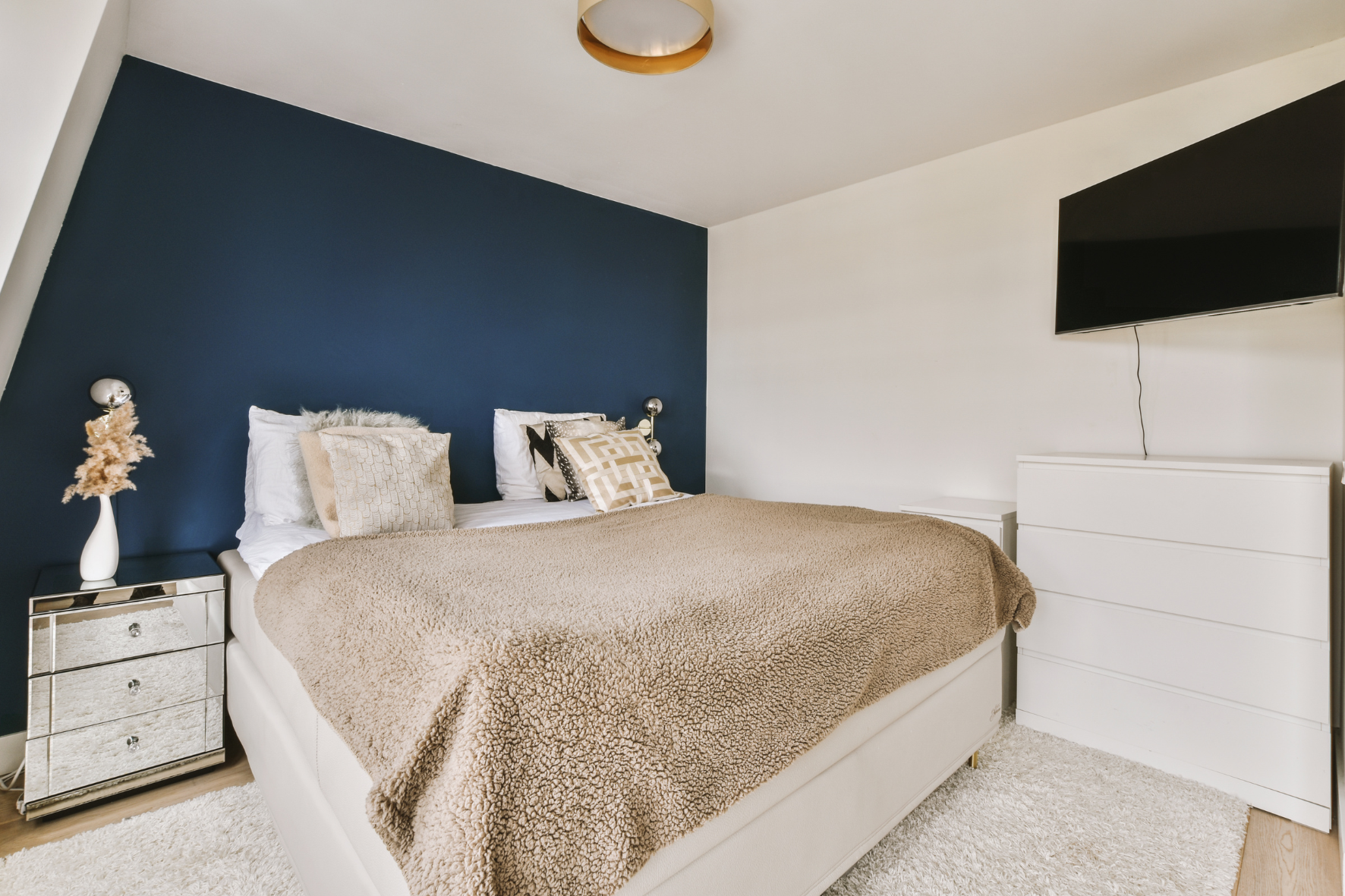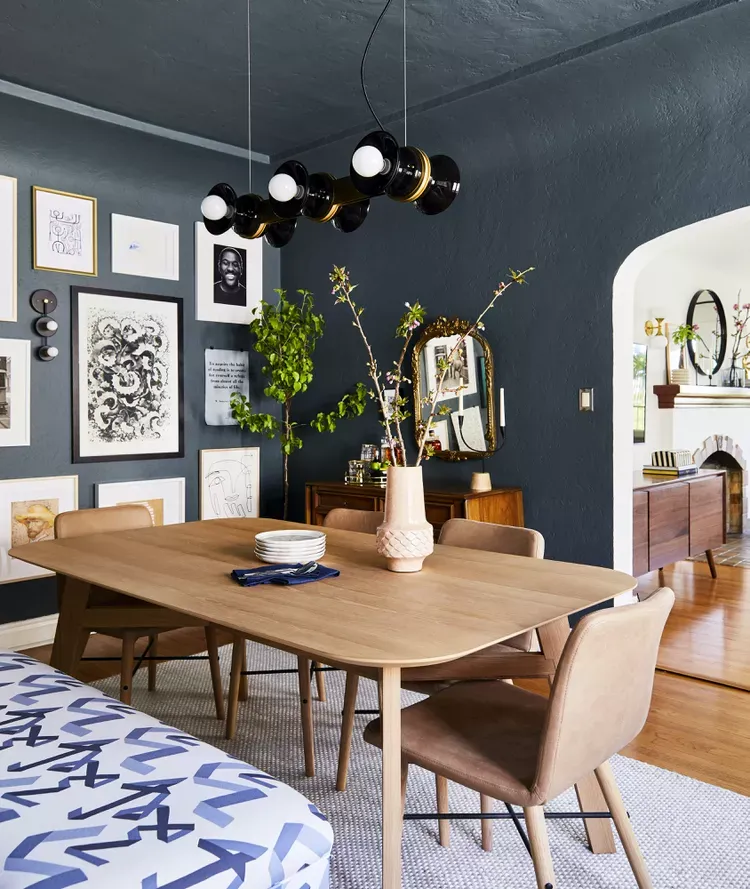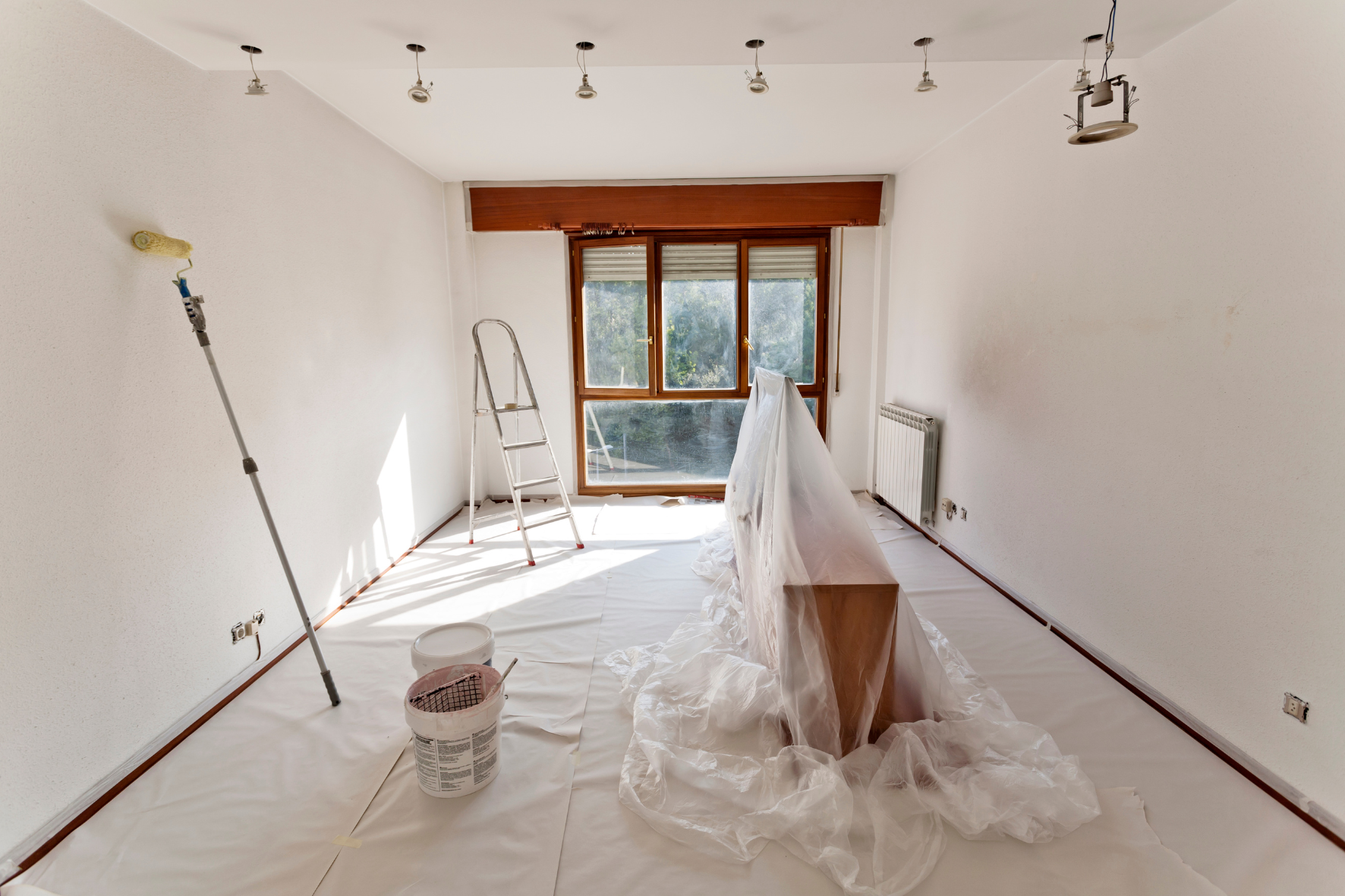Small rooms can evoke two distinct feelings: cozy and intimate or cramped and claustrophobic. Naturally, we all prefer the former. So how do you achieve a welcoming, comfortable atmosphere in your petite spaces without them feeling too tight or confined?
The secret often lies in your interior design choices, particularly the paint colors and how you utilize them. However, paint is just one piece of the puzzle—strategically managing light, clutter, and other design elements are equally important. In this comprehensive guide, we’ll share expert tips and tricks for making your small room look and feel bigger, with a focus on paint choices, smart design practices, and professional insights.
Choosing the Right Interior Paint Colors
When it comes to paint, your color choices can significantly impact how spacious a room feels. Paint colors not only form the literal borders of your space but also create an emotional and psychological effect. Dark, bold colors can make the walls feel closer, shrinking the space visually, while lighter shades can make a room feel more expansive.
Opt for Light Colors
Lighter paint colors are generally preferable in small rooms because they create the illusion of more space. Shades of white, soft grays, pastels, and muted hues reflect more light, making the room feel airy and open. You can still introduce pops of bold or darker colors through accents such as artwork, furniture, or decorative items, but keeping the walls light will prevent the space from feeling overwhelmed.
Here are a few popular light colors that work well in small rooms:
Navajo White (Benjamin Moore) : A warm, soft white that adds brightness without feeling stark. White Dove (Benjamin Moore) : A versatile, classic white with a slight warmth, perfect for a clean, crisp look. Alabaster (Sherwin-Williams): When you want the brightness of a white without sacrificing a warm coziness, try this soft, warm but balanced white
Using Bold Colors in Small Spaces
While light colors are often the go-to for making a room feel larger, that doesn’t mean you have to shy away from bold hues entirely. In fact, when used strategically, dark colors can create a dramatic effect that can actually make a room feel larger. The key is to use the right undertones and sheens to balance the color. Consulting a professional painter can help you choose the best options for your space and avoid common pitfalls.
Some dark colors that work well in small spaces include:
Bohemian Black (Sherwin-Williams) : A rich, warm black that adds depth without feeling too heavy. Black Panther (Benjamin Moore): A deep, luxurious black with a smooth finish that adds sophistication and a sense of expansiveness when paired with the right accents.

Accent Walls to Draw the Eye
If painting the entire room a bold color feels daunting, consider using an accent wall instead. Accent walls can create an optical illusion that makes the room appear larger by drawing the eye to a specific area. For example, a darker accent wall behind the bed in a small bedroom can create a sense of depth, making the space feel bigger. Additionally, accent walls can serve as a focal point for your room, helping to guide your furniture placement and decoration.
Patterns for Visual Interest
Patterns can be a fun way to add personality to a small space while making it feel more dynamic. Vertical stripes, for instance, can make a room appear taller and add to the feeling of openness. Be mindful of the scale of the pattern, though. In smaller rooms, wider stripes or smaller, subtle patterns work best, as overly large or intricate designs can overwhelm the space. If stripes aren’t your thing, other patterns like geometric shapes or even textured finishes can add dimension without making the room feel busy.
Maximizing Light for an Airy Atmosphere
Light is one of the most powerful tools at your disposal when it comes to making a small room feel larger. Natural light, in particular, can make a room feel open and airy. Here’s how to maximize light in your small spaces:
Embrace Natural Light: If your small room has windows, make the most of them. Avoid heavy curtains or blinds that block light; instead, opt for sheer curtains that allow light to filter through while providing some privacy. You can also use light, airy fabrics for window treatments that are easy to pull back, letting in maximum daylight. Use
Mirrors: Mirrors are a classic trick for making a room feel larger. They reflect light, which can help brighten up dark corners and give the illusion of more space. Placing a large mirror across from a window can amplify the amount of natural light in the room. Even small mirrors strategically placed can enhance the sense of openness.
Strategic Lighting: In addition to natural light, the right lighting fixtures can make a small room feel more spacious. Layering light sources, such as overhead lights, floor lamps, and table lamps, can eliminate shadows and brighten up the entire room. Choose light fixtures that blend with your room’s decor while providing ample illumination to avoid dark, cramped corners.
Declutter for Visual Simplicity
One of the fastest ways to make a small room feel cramped is to fill it with too much stuff. Even if there’s enough physical space, excessive clutter can create visual chaos that overwhelms the senses. To avoid this, aim for simplicity in your furniture and decor:
Declutter and Organize: Start by paring down your belongings to only the essentials. Choose a few well-curated pieces of furniture and decoration that align with your design goals, and let go of anything that doesn’t serve a purpose. Keep surfaces clear of knickknacks, and store smaller items out of sight to create a clean, uncluttered look.
Maximize Storage: In small rooms, storage solutions are key to keeping clutter at bay. Consider multi-functional furniture like ottomans with hidden storage, wall-mounted shelves, or under-bed storage options to make the most of every inch of space. Built-in shelving or custom cabinetry can also be a great way to add storage without sacrificing floor space.
Keep It Simple: When it comes to decorating a small room, less is often more. Choose a few statement pieces that reflect your style and complement the room’s color palette, rather than trying to fill every inch of space with decor. A simple, streamlined design will make the room feel more open and relaxing.

Painting Techniques to Enlarge the Space
The way you apply paint can also make a significant difference in how large or small a room feels. Here are some additional painting techniques that can help maximize the space in a small room:
Paint the Ceiling: Painting the ceiling the same color as the walls or a few shades lighter can create the illusion of height, making the room feel taller. A lighter ceiling color will draw less attention and make the ceiling seem farther away. Conversely, a dark ceiling color can make the room feel smaller and more enclosed, so it’s best to stick to light, airy hues for small spaces.
Use Sheen to Your Advantage: The finish or sheen of the paint can also affect how spacious a room feels. Glossy or satin finishes reflect more light than matte finishes, which can help make the room feel brighter and more open. However, be cautious with high-gloss finishes, as they can sometimes highlight imperfections in the walls. A semi-gloss or satin finish strikes a good balance between reflectivity and smoothness.
Feature Walls and Patterns: While we mentioned accent walls earlier, consider combining accent colors with unique patterns to create a sense of movement and depth. Vertical stripes, as previously discussed, elongate the room’s height, while horizontal stripes can make a narrow room feel wider. When incorporating patterns, be mindful of scale—choose designs that enhance rather than overwhelm the space.
Testing Paint Colors Before Committing
With so many options and factors to consider, choosing the right paint color for a small room can feel overwhelming. One of the best ways to make sure you’re happy with your choice is to test the color before fully committing:
Use a Paint Visualizer Tool: Many paint brands offer online visualizer tools that allow you to upload a photo of your room and try out different paint colors virtually. This can help you see how various shades will look on your walls before making a final decision. Try Sherwin-Williams color tools here .
Test Samples in the Room: Once you’ve narrowed down your options, purchase small sample cans of your top choices and paint test patches directly on your walls. Live with the colors for a few days, observing how they look in different lighting conditions and at various times of the day. This will give you a better sense of how the color will feel in the space and help you make an informed decision.
Professional Guidance for Painting Small Spaces
While it’s possible to paint a small room on your own, enlisting the help of a professional painting company can make a significant difference in the final outcome. Experienced painters not only have the expertise to apply paint smoothly and evenly but can also offer valuable insights into color selection, finish options, and techniques for maximizing space.
Whether you choose to go the DIY route or hire professionals, carefully considering your paint colors, lighting, and design elements will go a long way in transforming your small room from cramped and confined to cozy and comfortable.
By combining thoughtful paint choices with decluttering, strategic lighting, and smart design, you can make any small room feel bigger, brighter, and more welcoming.

